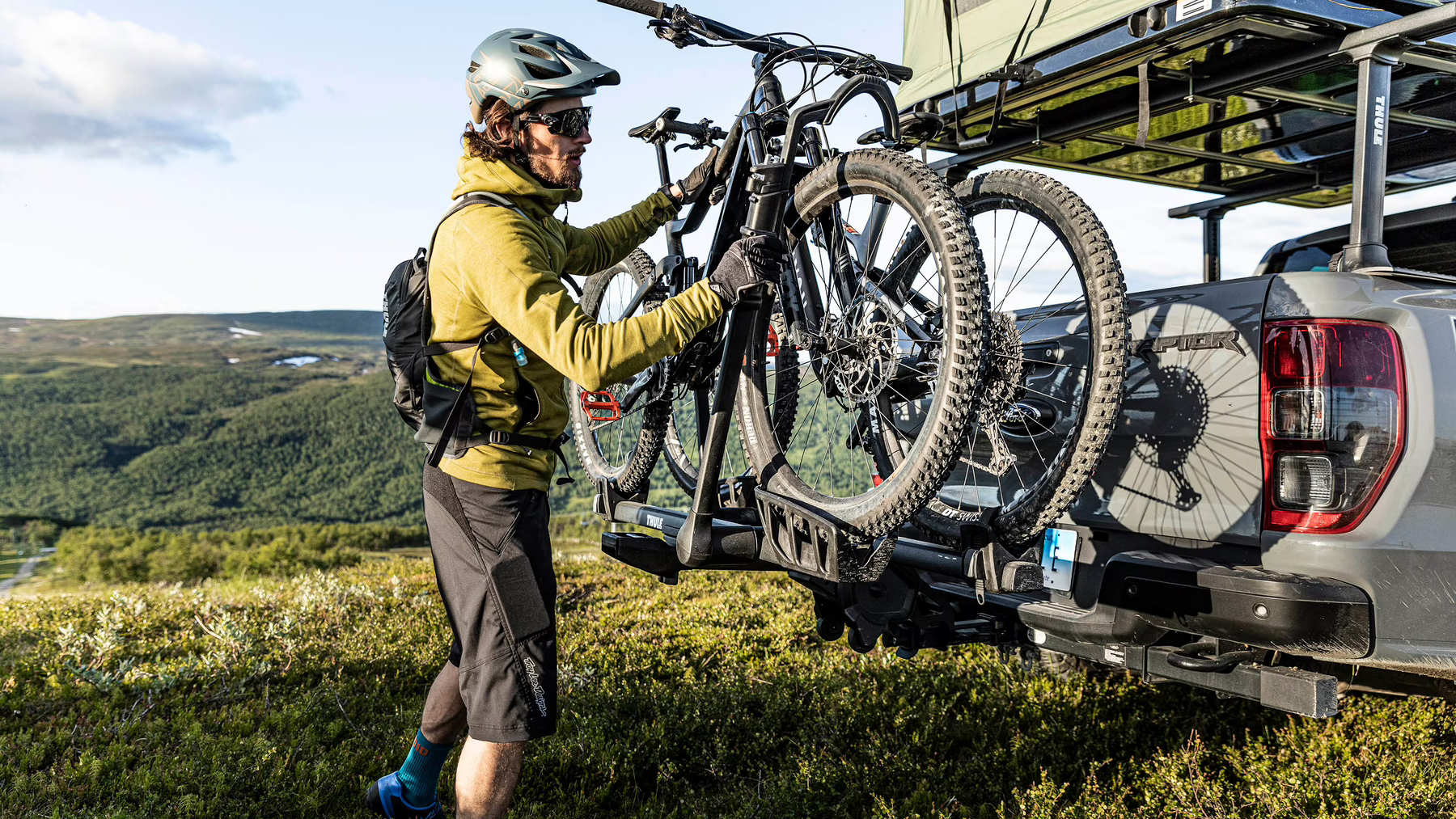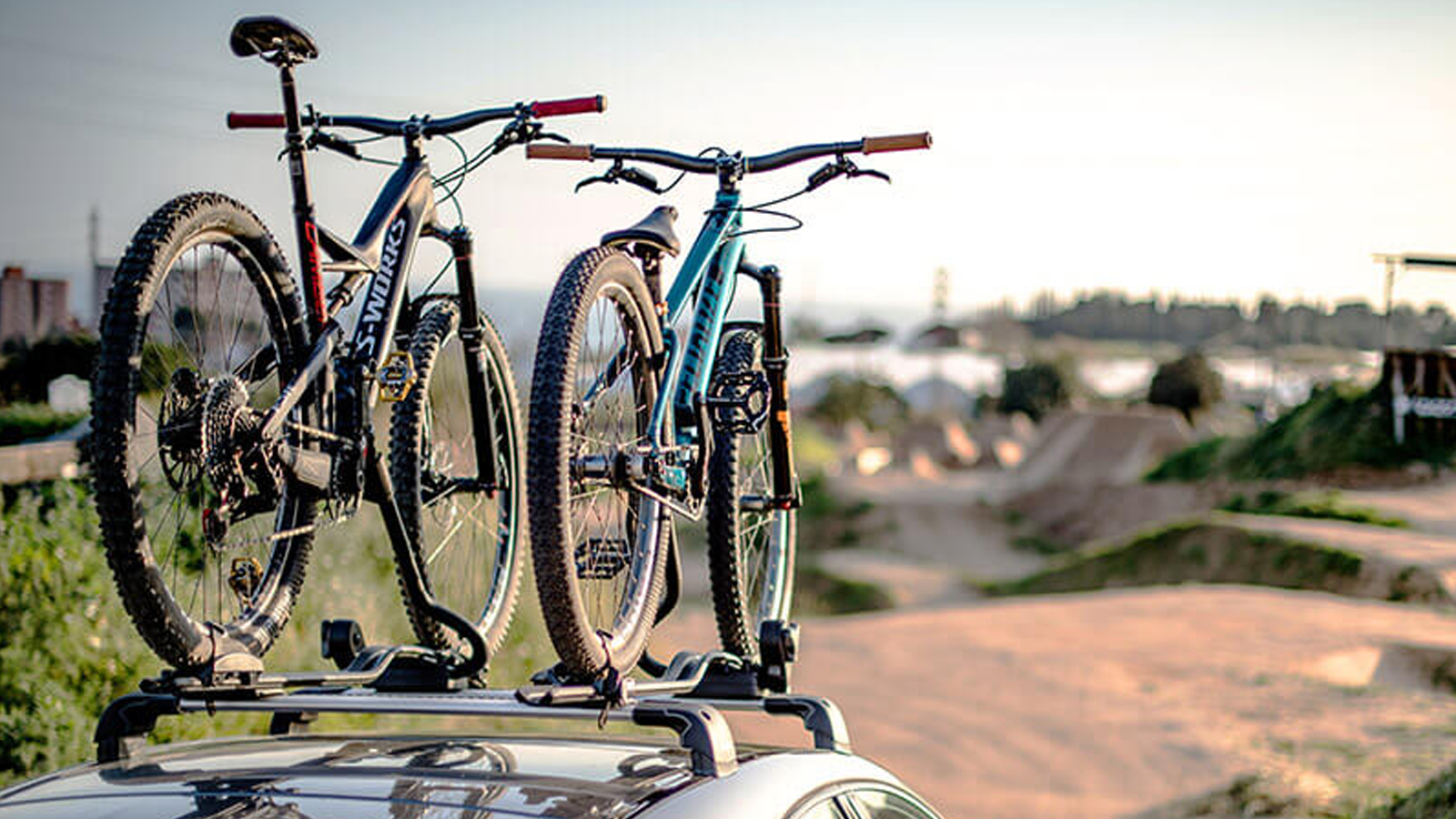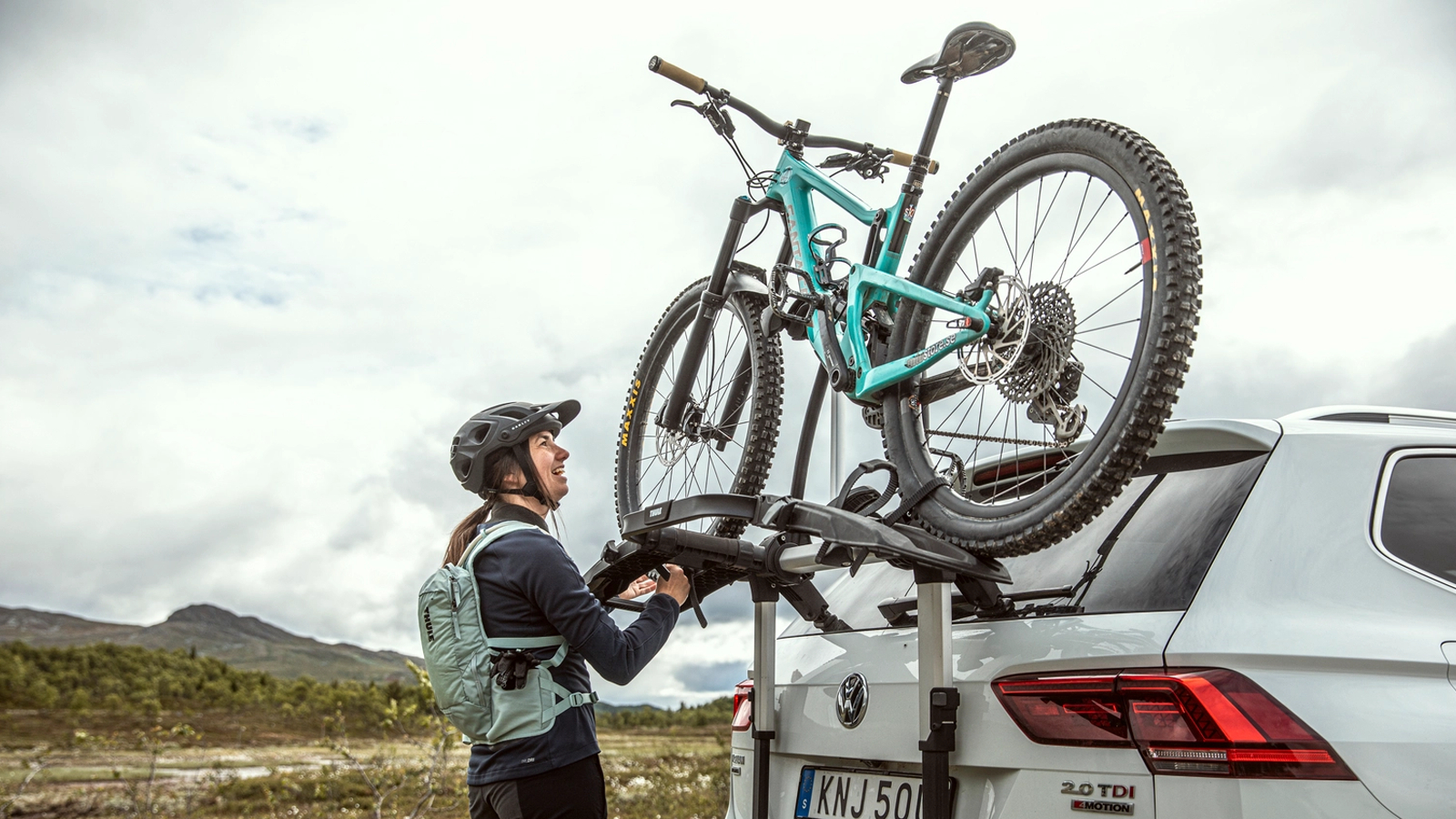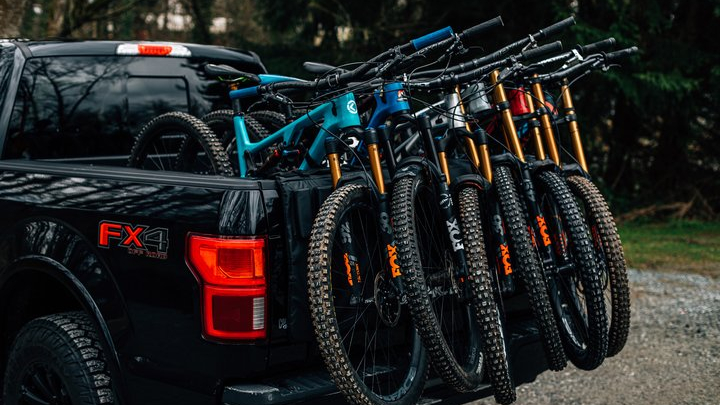Best way to transport mountain bikes
Unless you are seriously lucky, most mountain bikers need to drive to the trailhead, we look for the best way to transport mountain bikes

The best bike racks for MTB offer incredibly effective ways to transport your bikes with a vehicle, but working out which is best for your budget and your particular combination of vehicle and bikes can be mind-boggling.
In this article, we’ll look at the best ways to transport hardtails, full-suspension mountain bikes and e-bikes, on everything from small hatchbacks to estate cars and vans. We’ll look at the pros and cons of roof-mounted bike racks, towbar-mounted racks and boot-mounted racks, as well as in-vehicle options.
The most obvious priorities are that your solution is safe and doesn’t damage your bikes or the car. But ease of use varies a lot between options, and while you often get what you pay for, that’s not always the case. Let’s find out more.
Before we start, a few universal pieces of advice: always use your own bike lock when parked, as built-in locks are just a mild deterrent; add some secure padding where frames are likely to rub against anything; and rinse off the parts of a frame that will touch the rack, to avoid damage from abrasion.
Transporting your bike in your car

Best for: Solo travel
If you’ve got room, carrying your bike in your car is the most secure and aerodynamic option, and keeps your bike safe from the elements too. If you take one or both wheels off, you might be amazed at what you can fit even in a hatchback. In an estate, wide handlebars will probably mean you need to take the front wheel off, but with careful use of old blankets as protection, you can safely carry a couple of bikes.
Top tips for transporting your bike in your car:
- Use brake-pad spacers or cardboard if you take your wheels off, to avoid a lever squeeze accidentally clamping your pads together
- Use a chain keeper if you take your back wheel off, to avoid the chain dragging over your kit
- Go deluxe with a good boot liner to protect your cars interior
Pros:
- More secure from accidents or theft
- Keeps the bike dry and clean
- Doesn’t affect fuel economy
Cons:
- Uses boot space and likely not an option if you’ve got more than one passenger
- Not great with dirty or wet bikes (though bootliners help)
- More of a faff than a good bike rack
Roof-mounted bike racks

Best for: Lighter bikes
Roof-mounted bike racks keep your bikes out of the way and can be relatively economical to buy, especially if you already have crossbars on your roof for them to attach to. They attach the bike either by the frame, the front axle, or the front wheel.
The front-wheel versions are particularly well suited to mountain bikes because they adapt well to longer bikes and aren’t affected by the design of the frame (both of which can be tricky for frame clamping models). Axle-mounted versions tend to be more stable but more of a faff, especially if you have multiple bikes with different axle types. In all cases, you buy the racks individually and you can fit three or four on a roof, depending on how much space you want per bike.
On the downside, roof-mounted bike racks can affect your fuel consumption by as much as 20 percent. And while mounting some bikes can be an easy one-person job, combine a heavier bike with a tall vehicle and it can be awkward even for two people.
Top tips for
transporting your bike on a roof-mounted rack:
- Carbon frames can be damaged by clamps, so use a front-wheel rack, or one of the slightly carbon-friendlier clamp-based models
- Clean the frame if you use a frame clamp, to avoid abrasion marks
Pros:
- Doesn’t impede access to the boot
- Bikes don’t touch each other
- Can be very quick to use
Cons:
- Can be hard to access for smaller or less strong users, on SUVs or for heavier bikes
- Affects fuel economy, even with an empty rack
- Easy to forget they’re there when driving under barriers
Trunk and boot-mounted bike racks

Best for: Occasional use for one or two lighter bike, conventional double-triangle frame designs with straight top tubes.
Boot mounted bike racks are a cheap and cheerful option. They use straps and stabilizing feet to attach to the back of your car, and bikes typically hang from them by the top tube.
A cheap, badly mounted one can be a real safety hazard, but mostly the downside is the faff of attaching and tensioning it on your car each time and securely attaching bikes to them. They’ll work best with simple hardtails - if you have a full-susser you’ll want to check the attachment points will fit into your frame. As with hitch racks, wider bikes can protrude beyond the edges of a small car, though at least with the boot-mounted ones you can remove the wheels, which also relieves weight from the rack.
Top tips for transporting your bike on a boot-mounted rack:
- Use extra straps or bungees and snug them really tight so nothing can work loose.
- Keep the tires away from the hot exhaust pipe
- Consider taking wheels off
Pros:
- Cheap
- Easy to store
Cons:
- A faff to attach each time, and usually prevents access to the boot.
- Not for heavier bikes
- You’ll need to use a number plate board with an electrical attachment if your lights or plate are obscured. Saving money on a rack won’t feel so sweet if you're fined or someone runs into the back of you because they can’t see your brake lights.
- You need to take care not to damage the car paintwork, or damage weak points of the car (like spoilers)
Towbar- and hitch-mounted bike racks

Best for: Bigger mountain bikes, e-bikes
Towbar- or hitch-mounted platform racks are a rock-solid and easy to load option. They’re also expensive, especially as adding a towbar and electrical hookup to your car adds a lot of extra cost, before you’ve even bought the rack. (It can be cheaper on some cars.)
Because the rack only sits at knee-level, it’s easy to load bikes, even e-bikes. The best bike hitch racks or towbar racks usually take three bikes, and while they do have a weight limit, it’s generally higher than on roof racks. More expensive models have a built-in duplicate set of car lights and number-plate holder, plus a tilt function that lets you access your car boot, while some can take four bikes.
Cheaper towbar-mounted options exist, such as the simple Pendle Hang-On rack
Top tips for transporting your bike on a towbar-mounted rack:
- Be aware of the extra length at the back of your car, especially as your parking sensors won’t work with a rack on
Pros:
- Super-stable
- Super-easy to load and unload
Cons:
- Expensive, especially if you don’t already have a towbar or electrics.
- Bulky to store
- Does limit access to the boot, even on tilt models
- Some riders find that exhaust can contaminate rotors, especially from older diesels
Van and pick up setups for transporting bikes

Best for: Transporting multiple dirty mountain bikes and e-bikes
Now we’re talking. Forums are full of starry-eyed mountain bikers talking about the moment they finally ditched the hassle and bought a van to transport their bikes. (‘And you can even sleep in it!’) They’re equally full of mountain bikers trying to work out how best to secure their bikes in their van, but let’s just say that’s part of the fun, and the methods range from zip ties to masterpieces of cabinet-making.
The Bike Stow is a brilliant ready-made option for 2-4 bikes, rock solid and very fast to use. It was enthusiastically rated by our own Guy Kesteven, who’s carried more bikes in vans than you and I have had hot dinners.
If you’ve got a pick-up truck, then (a) we’re jealous, and (b), you might be interested in the idea of a tailgate pad like the Race Face Tailgate pad, which lets you dangle the front end of your bike over the back of the tailgate while the rest of the bike holds securely inside.
Pros:
- Super-easy to load and unload
- Can carry loads of bikes
- Vans can be converted to a camper for ultimate mountain bike van-life trips
- Van transport adds security
Cons:
- Buying a van is expensive
- Most vans can only take one or two other people

Sean has old school cycle touring in his blood, with a coast to coast USA ride and a number of month-long European tours in his very relaxed palmares. Also an enthusiastic midpack club cyclocross and XC racer, he loves his role as a junior cycle coach on the Kent/Sussex borders, and likes to squeeze in a one-day unsupported 100-miler on the South Downs Way at least once a year. Triathlon and adventure racing fit into his meandering cycling past, as does clattering around the Peak District on a rigid Stumpjumper back in the day.
Height: 173cm
Weight: 65kg
Rides: Specialized Chisel Comp; Canyon Inflite CF SLX; Canyon Aeroad; Roberts custom road bike
